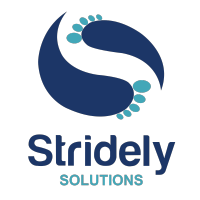How IoT is Disrupting Various Areas and Industries: A Quick Insider

IoT – Internet of Things, is currently disrupting every sector. If we talk about the market size, IoT is expected to grow at a rate of 25.4% in the next 7 years (2021-2028). Yup, this is massive!
Effective and Viable Data Strategy – The Key to Business Success in Modern Times

Establishing and running a business demands many things and a viable data strategy tops the chart. This is no longer a hidden fact that quality data and its effective utilization is what places a business way ahead in the competition. The fate of data is decided by implemented data strategy. The efficacious strategy is, lucrative are the outcomes.
Next-Generation SAP Managed Services: What All Your Enterprise Can Avail?

SAP never disappoints its users and endows them with inventive and updated solutions. This is why it’s one of the most preferred and dependable ERP solutions in the market, holding a 24% share. The tools have become a crucial operational aspect for all sorts of businesses, regardless of the industry type and business size.
Planning Hybrid, Multicloud, and Edge Cloud Strategy With Azure: Why and How?

The launch of cloud computing is one of the most historical events as it empowered enterprises to cut down the operational cost, efforts invested to set up the core infrastructure, and tediousness involved with system maintenance significantly.
Multi Model Search Engine: Product Recommendation for Fashion & Interior Designers

Fashion and interior designing are two industries where the visual appeal of the products used or put on the matter a lot. It won’t be erroneous to call fashion and interior designing all about a game of appearance and looks. To meet the client’s expectations and utility of a design, fashion and interior designers have to put tons of effort and deal with a fair share of struggles. At times, the vague or incomplete inputs increase the burden of interior and fashion designers.
Machine learning for Precision Agriculture: How Smart Farming can Leverage from ML?

In the coming years the Agriculture sector around the globe will see a huge transformation as ML, AI, and automation will unlock will bring game-changing opportunities on board. This article highlights how famers and technologists can harness the power of advance technology for propelling the industry forward.
The Write Interface enabled ADSO Ability for SAP BW/4HANA

Users of the SAP BW/4HANA system are endowed with a powerful capability, ADSO or Advanced DataStore Object, to leverage the data modeling. The post throws light on its key abilities and ways to bring them into action.

